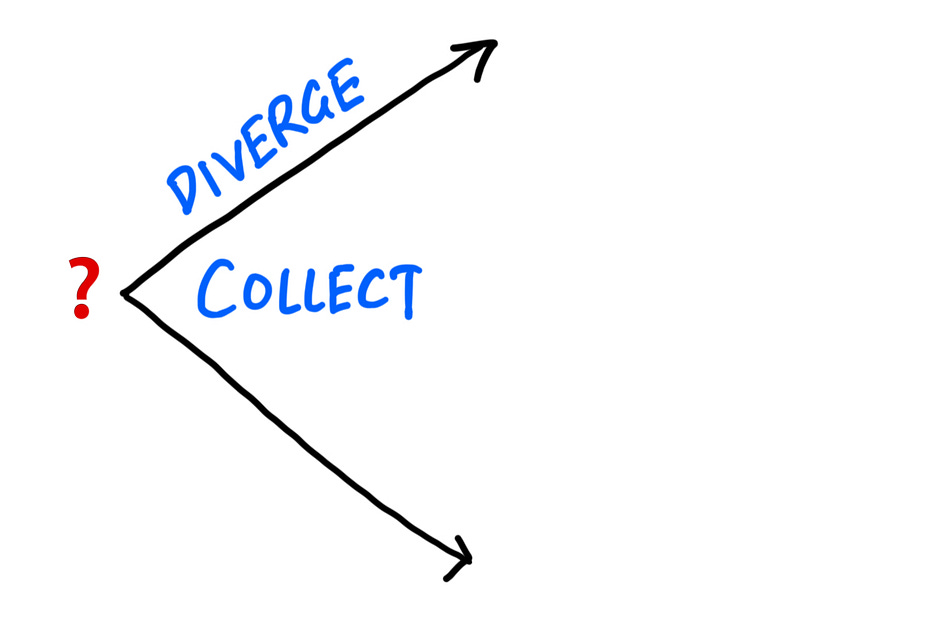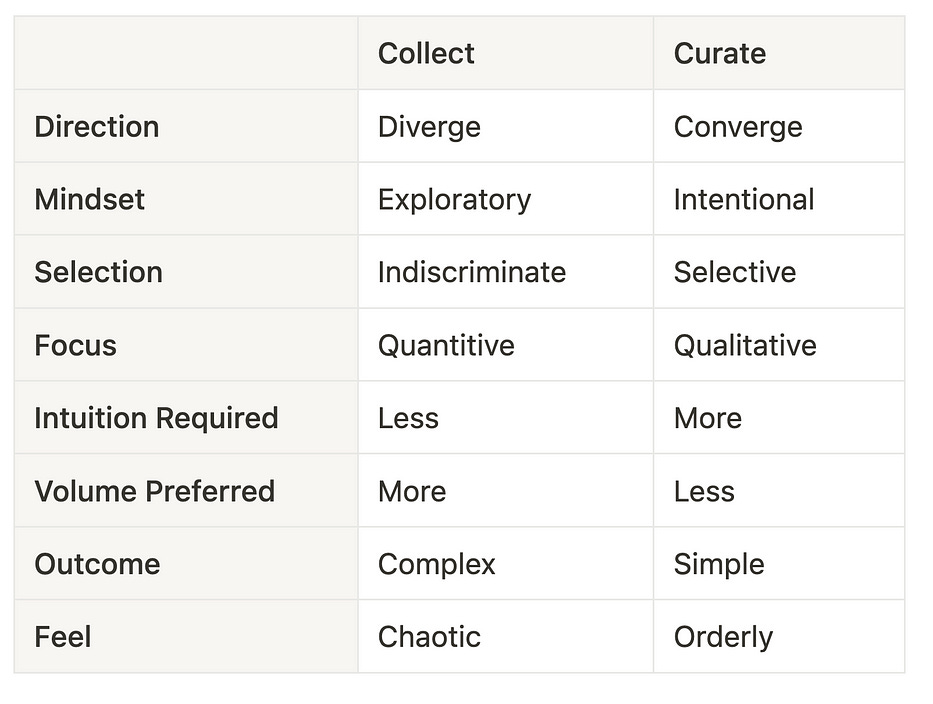How to Do Great Work
It’s a two-step process.
Hi friends,
This week, my manager at work was about to meet with a vendor who is also a customer. He asked me to create a one-page document on everything he should know in advance of the meeting.
I didn’t know much about this vendor/customer, so I went in all directions: I talked to IT, finance, and sales. I searched our internal systems for past transactions and project updates.
Since I didn’t know what my answer should be, I explored and gathered data from all possible sources. My focus was on getting more information.
I diverged and collected.
Soon, dozens of memos, spreadsheets, and presentation slides emerged. I felt I had enough to start, so I stopped gathering.
My focus shifted to identifying insights.
I read through the various documents and underlined the main issues. A few themes emerged: our current relationship with the company, in-flight projects, and product feedback.
Based on my notes, I wrote a one-page briefing in my own words. My summary had five key points in bolded headers and a few supporting bullets under each section.
I converged and curated.
As I worked on this project, an insight dawned on me:
Knowledge work is creative work.
Collect, then curate
If you are reading this post, you likely work with data, ideas, and concepts.
The problem today is that everyone faces information overload. It used to be okay to copy and paste a large body of text and hit send. Now, if I send out a 20-page document, no one will read it. And I will be in trouble.
So, how should we create?
Creativity requires collecting raw materials.
In the beginning, divergence is a great strategy. When it’s unclear where the answer lies, gathering more data helps. Broadening our perspective helps us build a mental map of the subject.
At this stage, it helps to park all the ideas and inputs in one place and let them sit.
At some point, however, we must march towards producing an output.
We need to transition to step two: curation.
The transition demands turning inward. It’s time to stop collecting. Instead, we turn our attention to what we have already gathered.
As we revisit the notes in our collection, we must ask ourselves: what is essential? Is the information converging to a theme? What insights matter?
A museum curator may own 1,000 pieces of artwork, but she must only pick the best ones for her exhibit. Less is more in most cases.
How we need to approach work today is the same.
We must be curators.
We must present the most important ideas in a clear way.
We must leave the rest — even the “pretty good stuff” — behind.
Curation is an art rather than a science. It’s an art because there is no manual to follow. How do we know what’s essential for our audience? What is the best way to present the “great stuff”?
These are creative decisions we must make.
But curation is also the fun part. It feels like treasure hunting to me.
Curation is a skill we can improve on. Every time we practice, we develop our taste through trial and error and the feedback we receive.
Going beyond work
While I have focused on work so far, other aspects of life can also benefit from this “Collect, Then Curate” strategy.
For example:
Travel planning: I am planning a trip to Southern California. A travel website suggests a few areas of Los Angeles. I see six decent options and stop searching. I highlight the top three based on location, reviews, and price. I book one and move on.
Cooking: I need to figure out how to cook a piece of fish. I bookmark five recipes in a browser folder. I pick the one that looks the best and give it a try.
Reading: I read a book on my e-reader and highlight the sentences that resonate. I review the highlights after I finish the book. I curate the best ideas and experiment with them in my work. (This was the process I used to write this article. A book called Building a Second Brain by Tiago Forte inspired a few ideas in this essay.)
If you see other ways of collecting and curating in your work or personal life, I’d love to know.
(Note: Outside of my weekly letter here, I am also studying how remarkable writers, artists, and creators get started and keep going. I share a story daily at 1000leaps.com. I have shared ~75 stories so far out of my goal of 1000.)



